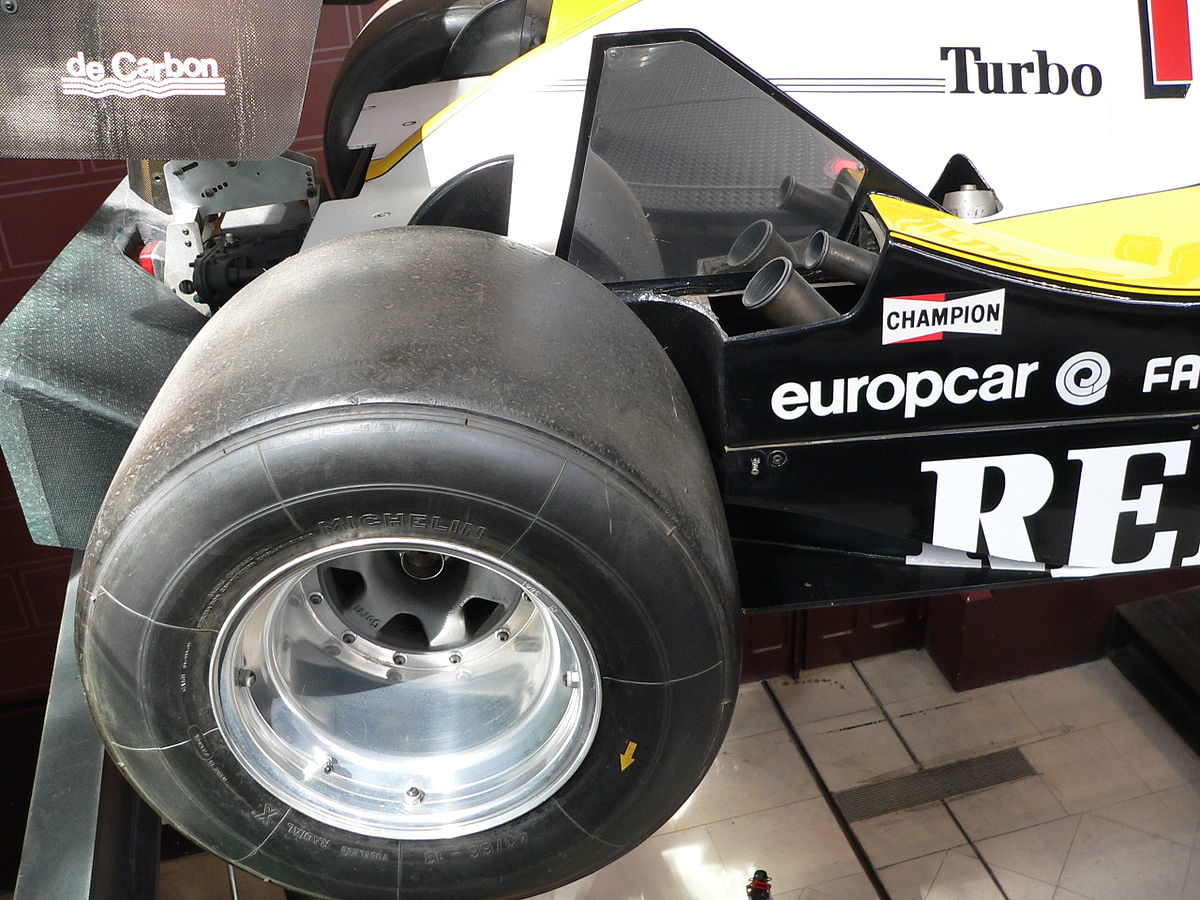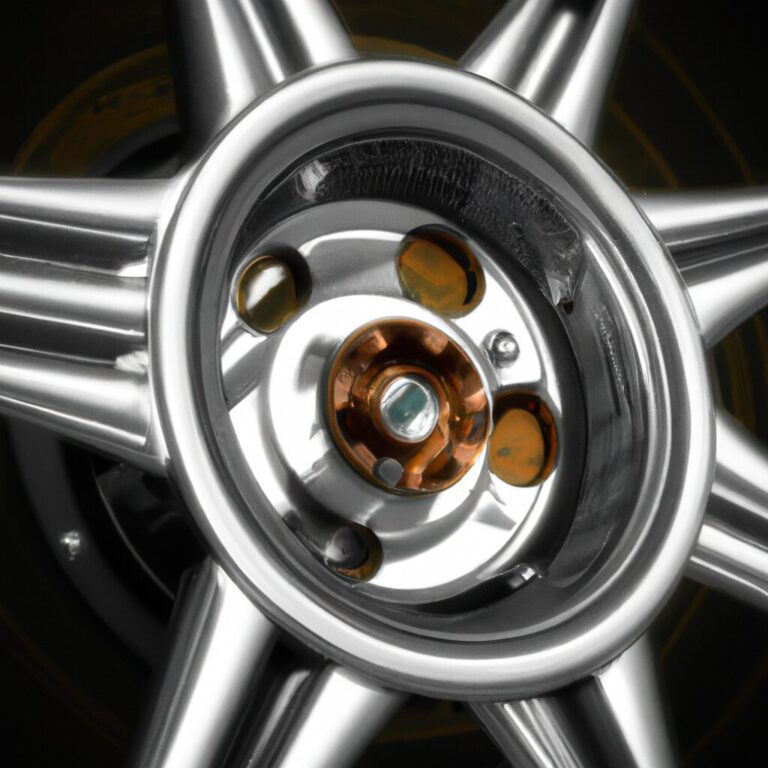Why are Race Car Tires Smooth
Race car tires are smooth to provide maximum grip and traction on the track, enhancing performance. The lack of tread allows for better contact with the road surface, improving handling and stability during high-speed maneuvers.
Smooth tires also reduce rolling resistance, helping to maintain speed and fuel efficiency. Additionally, the absence of grooves minimizes heat buildup, preventing overheating and ensuring consistent performance throughout extended periods of intense racing. These specialized tires are designed to optimize performance and safety for race car drivers, making them an essential component of competitive racing.
The Science Behind Race Car Tires
As race cars zoom around the track, the smooth, sleek tires beneath them play a crucial role in their performance. The science behind race car tires is a fascinating area of study, involving complex engineering and advanced materials. In this post, we’ll delve into the intricacies of race car tire design and explore the technology that gives these tires their competitive edge.
The Importance Of Tire Grip
Race car tires are smooth for a reason – they provide optimal grip on the track, allowing drivers to corner at high speeds and maintain control through tight turns. The treadless surface maximizes contact with the pavement, enhancing traction and stability. This superior grip is essential for achieving faster lap times and gaining a competitive advantage on the race track.
Tire Technology In Racing
Modern race car tires are the result of extensive research and development, incorporating advanced materials such as high-performance rubber compounds and specialized construction techniques. These technologies are designed to withstand the extreme demands of high-speed racing, delivering precise handling and consistent performance throughout a race. From tread patterns to tire pressure management, every aspect of tire technology in racing is meticulously engineered to optimize performance and enhance the driving experience.

Credit: www.quora.com
The Benefits Of Smooth Tires
Race car tires are smooth to provide optimal performance on the track. Smooth tires offer increased grip, allowing vehicles to maintain better control and higher speeds around corners, leading to improved race times. Additionally, smooth tires also reduce rolling resistance, enhancing fuel efficiency for race cars.
Enhanced Performance On Dry Tracks
Smooth tires are crucial for optimal performance on dry racing tracks due to increased stability and traction.
Enhanced grip on smooth tires allows race cars to maintain high speeds and navigate corners with precision.
These tires provide maximum contact with the road surface, enhancing acceleration and cornering abilities.
Reduced Rolling Resistance
Smooth tires experience reduced rolling resistance, leading to improved fuel efficiency and overall speed.
The decreased friction of these tires minimizes energy loss while the race car is in motion.
Lower rolling resistance also contributes to extended tire lifespan and reduced wear and tear.
Treaded Tires Vs. Smooth Tires
When it comes to race car tires, you might wonder why some are smooth while others have treads. Let’s delve into the differences between treaded tires and smooth tires.
Treaded Tires For Wet Conditions
Treaded tires are designed to provide better grip on wet surfaces. The treads help channel water away, reducing the risk of hydroplaning.
Smooth Tires For Track Performance
Smooth tires are ideal for track performance as they offer maximum contact with the road, enhancing traction and handling capabilities.

Credit: en.wikipedia.org
Factors Affecting Tire Performance
Smooth race car tires significantly impact performance due to reduced friction and enhanced traction, allowing for optimal speed and control on the track. The lack of tread patterns contributes to better grip, ultimately influencing the tire’s ability to handle high speeds and intense cornering without sacrificing stability.
Factors Affecting Tire Performance Race car tires play a crucial role in the performance of a vehicle on the track. The smoothness of these tires significantly impacts their ability to maintain traction, especially during high-speed corners and under heavy braking. Understanding the factors that affect tire performance is essential for optimizing the handling and speed of a race car on the track.Track Surface And Temperature
The track surface influences tire performance, with asphalt and concrete surfaces offering varying levels of grip. In addition, the temperature of the track can impact tire grip and wear. As the track temperature rises, tire grip may decrease, leading to reduced performance and increased tire wear over time.Tire Pressure And Temperature
The tire pressure and temperature play a critical role in optimizing tire performance. Proper tire pressure ensures optimal contact patch, ensuring maximum grip and stability during high-speed maneuvers. Similarly, maintaining the right tire temperature is crucial for consistent performance throughout a race. In summary, several factors such as track surface, temperature, tire pressure, and temperature significantly impact the performance of race car tires. By considering these factors and making necessary adjustments, teams can fine-tune the tire performance to gain a competitive edge on the track.Maintenance And Care For Race Car Tires
Discover the secret behind why race car tires are smooth and the importance of maintenance for optimal performance on the track. Smooth tires enhance grip and stability, requiring regular care to ensure peak performance during high-speed races and maneuvers.
Race car tires play a crucial role in providing the necessary traction and control for high-speed racing. To ensure optimal performance and safety, proper maintenance and care of these specialized tires are essential. This section will cover two key aspects of tire maintenance: Proper Tire Inspection and ReplacementTire Pressure Management.Proper Tire Inspection And Replacement
Regular inspection and timely replacement of race car tires are vital to prevent unpredicted failures and ensure maximum performance on the track. Here are some guidelines to follow: 1. Inspect tire tread for wear: Regularly examine the tread depth of your race car tires. If the tread has worn down to a level that compromises grip, it is crucial to replace the tire. Look for any signs of uneven tread wear, which may indicate an underlying issue with tire alignment or suspension. 2. Check for punctures or damage: Inspect the tire surface for any punctures, cuts, bulges, or other visible damage that could compromise the tire’s integrity. Even minor damage can lead to catastrophic tire failure at high speeds, so it’s important to address any issues promptly. 3. Monitor tire age: Race car tires are designed to perform optimally within a specific lifespan. Over time, the tire compounds can degrade, affecting their performance and safety. Keep track of the age of your tires and consult with experts or manufacturers to determine the recommended replacement timeline. 4. Rotate your tires regularly: To ensure even wear and extend the overall lifespan of your tires, it is advisable to rotate them periodically. This practice helps distribute the stresses evenly across all tires, reducing the likelihood of rapid wear on specific wheels.Tire Pressure Management
Maintaining the correct tire pressure is crucial for race car performance and safety. Here are some essential tips to manage tire pressure effectively: 1. Use a reliable tire pressure gauge: Invest in a high-quality tire pressure gauge to accurately measure the pressure before and after every race. Double-check the manufacturer’s recommended tire pressure specifications for your specific race car model. 2. Monitor tire pressure regularly: As the tires heat up during racing, the air inside expands, increasing the pressure. To maintain optimum handling and performance, regularly check and adjust tire pressure between races or as recommended by the manufacturer. 3. Keep track of temperature changes: Tire pressure is affected by temperature changes. Ensure that adjustments are made to account for variations in ambient temperature, as these fluctuations can impact tire performance and grip on the track. 4. Avoid overinflating or underinflating tires: Maintaining the correct tire pressure is vital. Overinflated tires can result in reduced traction and uneven wear, while underinflated tires can lead to poor handling and increased risk of tire damage or failure. Proper maintenance and care of race car tires not only enhance performance but also contribute to overall safety on the track. By adhering to regular inspections, timely replacements, and effective tire pressure management, you can maximize the lifespan and consistently achieve optimal results from your race car tires.
Credit: www.quora.com
Frequently Asked Questions On Why Are Race Car Tires Smooth
Why Racing Cars Have Smooth Tires?
Racing cars have smooth tires for better grip and traction on the track, improving speed and performance.
Why Are Race Tires Slick?
Race tires are slick to maximize grip on dry tracks, enhancing performance and speed. The smooth surface increases contact with the road, allowing better traction during high-speed maneuvers. This design helps racers maintain control and improve overall race times.
Why Do F1 Cars Use Smooth Tires?
F1 cars use smooth tires for better grip, traction, and speed on the track. The smooth surface reduces friction and allows the tires to maintain constant contact with the road, enhancing cornering abilities and overall performance.
Why Are Nascar Wheels Smooth?
NASCAR wheels are smooth to reduce friction, increase speed, and improve handling. Smooth wheels offer less resistance against the track, allowing the car to go faster. They also provide better traction and stability during turns, enhancing overall performance.
Why Are Race Car Tires Smooth?
Race car tires are smooth to maximize grip and traction on the racetrack, allowing for better control and higher speeds.
How Do Smooth Tires Benefit Race Cars?
Smooth tires reduce friction and rolling resistance, resulting in higher speeds and improved handling for race cars.
What Type Of Material Are Race Car Tires Made Of?
Race car tires are typically made of a high-performance rubber compound that provides optimal grip and durability on the track.
Conclusion
Race car tires are smooth for maximum traction and performance on the track. The smooth surface allows for better grip and handling, enhancing speed and control. It’s essential for racing safety and success. Understanding the reasoning behind smooth race car tires helps appreciate the science and precision behind competitive racing.
Smooth tires are a game-changer in the fast-paced world of motorsport.


